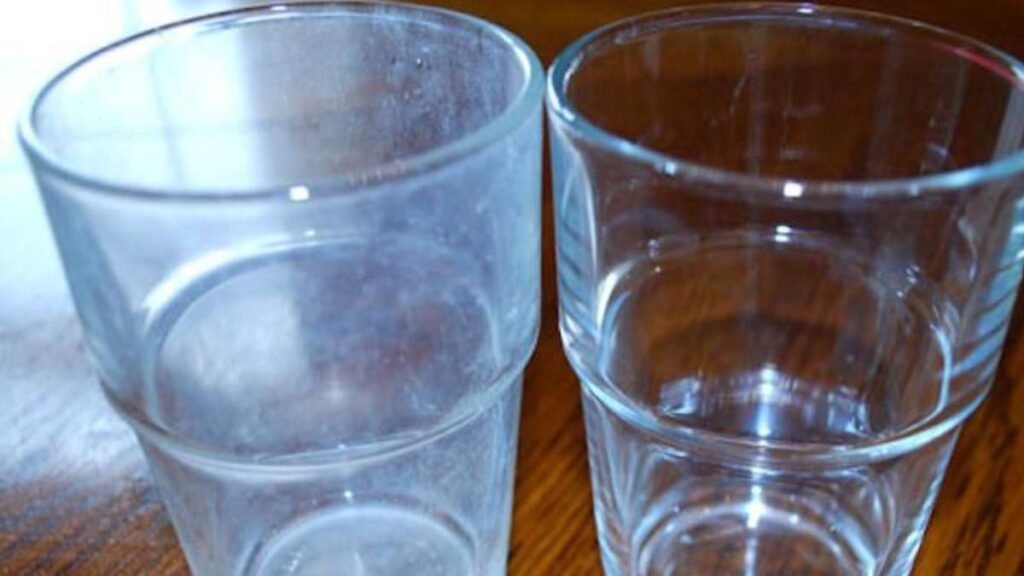Your dishwasher is meant to make your life easier. However, each cycle, white streaks appear on your glasses and plates. Frustrating, isn’t it? These residues dull the shine of your dishes and lead you to believe your appliance isn’t working properly. Fortunately, this isn’t a foregone conclusion. There’s a very simple trick, often overlooked, that can make all the difference.
And you don’t even need to change your machine or buy a miracle product. You’ll see that a few easy steps are all it takes to bid farewell to these unsightly marks.
Why White Streaks Appear After Washing
When you take out your plates or glasses from the dishwasher and find them covered with white streaks, it’s often due to hard water. This means the water has a high concentration of calcium, a small mineral that’s invisible to the naked eye.
When the water evaporates during the drying cycle, the calcium remains stuck to the dishware. These streaks can resemble white dust or a transparent film. There may also be soap residues or poorly rinsed food remnants.
If the temperature is too high, the calcium adheres even more easily. In short, it’s not that your dishwasher is broken; it’s just that the water and settings aren’t always properly adjusted.
Common Mistakes That Promote Residues
There are things we do without realizing it that make the issue worse. For instance, using too much soap can leave marks. The more you use, the more it lathers, but the foam doesn’t always rinse off well.
It sticks to the glasses, leading to those infamous white stains. Forgetting to fill the salt reservoir or rinse aid is also a mistake. These products help to soften the water and rinse the dishes properly.
Sometimes, we run a wash cycle that is too short or with water that isn’t hot enough. The result: the dishes aren’t cleaned properly, and deposits remain. Additionally, if the filter or spray arms are dirty, the water won’t circulate well. Thus, everything mixes, resulting in residues.
Good Habits to Eliminate White Streaks
To achieve clean and shiny dishes, it’s essential to adopt the right habits. First, you should adjust the salt quantity based on the water quality in your area. The salt helps to remove the calcium. After that, choose a quality dishwashing detergent; avoid low-grade soaps.
It’s best to select a product that is recommended by experts. Also, remember to clean your dishwasher regularly: including the filters, spray arms, and even seals.
You can also run the machine empty with a bit of white vinegar to clean the interior. Finally, don’t forget to check the wash temperature. If it’s too high, the calcium settles more quickly.
The Simple Trick That Changes Everything in Your Dishwasher
There’s one very simple action that many overlook: opening the dishwasher door immediately after the wash. This allows the steam to escape faster. Otherwise, it gets trapped, cools down, and leaves calcium on the dishware. By opening the door, the dishes dry better, without streaks.
If you wait a few minutes before putting away your glasses, they’ll have time to cool down. It’s a small habit that’s easy to adopt but makes all the difference. Try it at your next wash, and you’ll see, your glasses will shine like never before.

